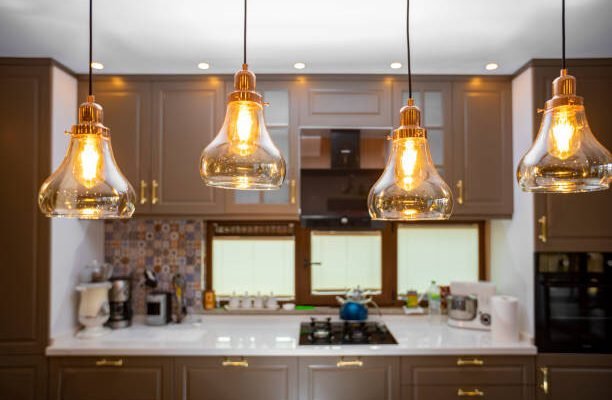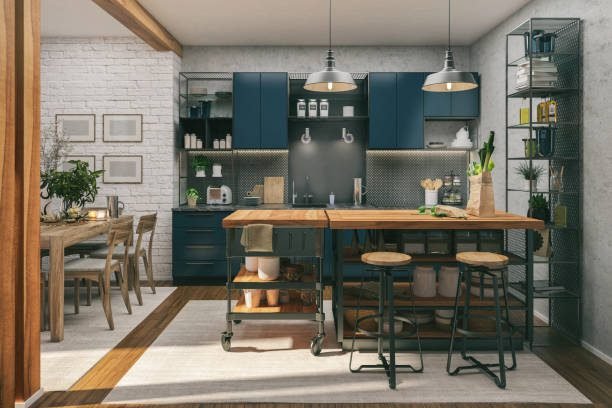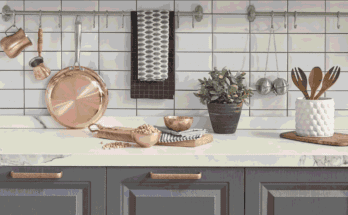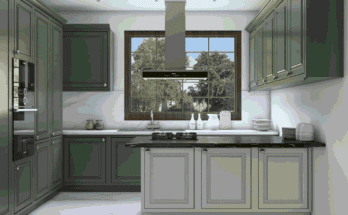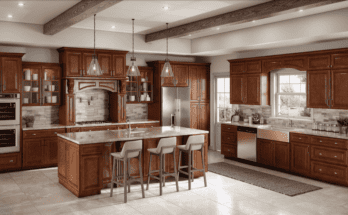1. Introduction: Illuminate Your Kitchen: The Ultimate Guide to Industrial Lighting
Industrial kitchen lighting is an excellent example of where form meets function, which is why it’s one of the most significant decisions for the kitchen. Industrial lighting not only assists you in completing tasks properly but also makes your kitchen more character and contemporary. This lighting style incorporates metal finishes, and uncovered bulbs and the outlook is simple and almost raw, fitting perfectly into modern and country house designs.
This article will explore Industrial lighting options, how to select appropriate bulbs and design and positioning methods that will ultimately lead to a well-lit industrial space with that additional aesthetic appeal.
2. Types of Industrial Lighting
Many industrial-style kitchens utilize a variety of light sources to provide all the different aspects of a well-rounded design. Here are the top lighting options:
- Pendant Lights: Industrial pendant lights are used because they can provide narrow-directed lighting over counters and kitchen islands among others. They are generally manufactured from metals, glass or cage-type tops and are instead suspended from the ceiling for a neater appearance.
- Track Lighting: Track lighting is directional because each fixture of the track lighting can be moved around and tilted. Good for houses with open spaces in the kitchen area or kitchens with atypical design, the track lighting serves to light large zones.
- Recessed Lighting: Since it is not very prominent, recessed lighting is ideal in industrial kitchens if one wants to keep it very unadorned. These are mostly recessed in the ceiling and give off uniform, general illumination without the fixtures being seen.
-
Wall-Mounted Fixtures: Floor lamps are also good but wall-mounted lamps give a more vintage look and can be aimed at particular zones for instance when placed near open shelves or over washing sections. They can also introduce an additional layered light source that perhaps wouldn’t be applied in other cases.
3. Benefits of Industrial Lighting
Industrial lighting is not just a trend; it has advantages to the need for style by increasing the functionality of your cooking space and its aesthetics. Here are some of the primary benefits:
- Enhances Functionality: If there are examples of workplace task lighting, then those include kitchen areas where task lighting is crucial over countertops and prep areas. Incident lights which point out to the area of work are frequently applied to industrial lighting as the food preparation, cutting, and washing activities require a significant amount of light.
- Boosts Aesthetic Appeal: That industrial lighting is very defiant, has rather square lines, and the furniture is made of metal, which gives a rather warm and refined look, without being overly glamorous. It also has a good compatibility with other design styles, and therefore it can suit a variety of kitchen decorations.
- Provides Versatile Design Options: Industrial lighting is not limited to a specific style; it includes a wide range of effects from basic to industrial vintage. This means that you can combine a combination of different kinds of fixtures to achieve this kind of layered lighting.
4. Choosing the Right Bulbs
The kind of bulb used can also affect the overall texture and lighting of the kitchen in question besides influencing the amount of energy consumed.
- LED vs. Incandescent Bulbs: Incandescent bulbs are cheap are provide a typical yellowish light while LEDs are very efficient and offer a long life span The high usage makes the life span a vital factor in a kitchen. LEDs also come in different colour temperatures, which means you have an easier time choosing that perfect kitchen atmosphere.
- Brightness Levels: In most cases, kitchens are going to need more light than other areas of the house. Ideally, go for bulbs with an output of about 4,000 lumens; however, if you want flexibility then, you should go for the dimmable bulbs. Pendant and recessed lights can be made brighter while the mounted fixtures might only require softer light.
-
Energy Efficiency: Thus, industrial kitchens call for functional light bulbs that will also last longer. LEDs are the popular choice for today’s smart lighting consumers mostly because they are energy efficient and environmentally friendly as they use less electricity and emit less heat.
5. Key Design Elements
Industrial lighting is characterised by the simplicity of its shapes and materials and its pragmatic nature. When designing with industrial fixtures, consider these elements:
- Material Choices: Standardized industrial lighting fixtures come with strong materials such as steel, iron and brass. Glass detail breaks up the tough façade and provides a foil to the strong material. If you want to give it a more personal feel, you can search for fixtures that have exposed wiring as this relates to industrialized mode.
- Colour Schemes: Black, bronze, and weathered grey also help to amplify the industrial look, but brushed metals add a little touch of class to your creation. Most homeowners who install lighting fixtures would want to co-ordinate your lighting to complement your kitchen cabinetry or hardware.
- Shapes and Styles: IKEA’s pendant simple dome-shaped pendants, cage-style fixtures and angular wall scones are timeless classics that instantly evoke industrial interiors. Select shapes that enhance the depth of your kitchen without creating clutter in the room.
6. Placement Strategies
Lighting is critical when it comes to distributing lighting fixtures across your kitchen to create both functionality and aesthetics.
- Over Countertops: There needs to be local lighting above work planes. Task lighting is installed at the correct heights; pendant lights fixed above the countertop should be at a height of between thirty to thirty-six inches.
- Prep Areas: Fixed lighting in track lighting allows you to direct the LED light in a specific direction which makes it ideal for lighting up countertops and such like areas that are necessary for food preparation.
- Seating Spaces: Gentle ceiling lighting above seats contributes to the concept of a welcoming ambience. For instance, wall sconces or dimmable pendants will do well for this, as there is enough light without being intrusive.
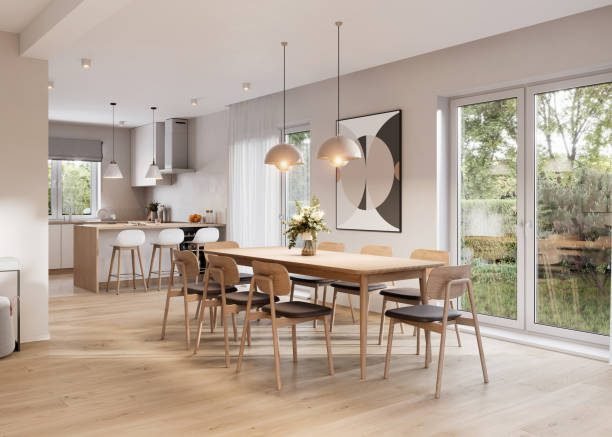
7. Combining Function with Style
Industrial kitchen lighting is rather diverse in inspiring ideas that combine functionality and aesthetics. Here are some tips:
- Mixing Materials and Textures: Combining metal items, especially fixtures, with wooden or glass surfaces is quite distinctive to industrial units, kitchens included. A metal pendant light with wood detailing would give a more industrial feel to its look.
- Highlighting Key Areas: Accents lighting must be used to draw the attention of people to specific features of the house such as open shelves or special wall features. In such areas, it is possible to use small spotlights or wall scones to help to call attention to special areas, or even to specific items.
- Balance Light and Shadow: Essentially, industrial kitchens provide some contrast between bright and dark areas and this can be accomplished by layering, various lighting types. Perhaps, use the modern lighter in the primary working areas and moods in other districts.
8. How to Install Industrial Lighting
Some of the industrial lighting fixtures can be fixed easily while some others may need the services of a professional.
- DIY vs. Professional Installation: While basic pendant lamps or even those mounted to the walls can easily be hung by oneself, more complicated installations, such as track lighting, are more cumbersome and are therefore best handled by professionals.
- Common Installation Mistakes: Do not put greedy lights concerning each other or in locations that may cause ocular effects. Check for all the fixtures’ stability especially industrial designs that use heavier metal fixtures.
-
Wiring and Safety Tips: Always make sure that your electrical circuits are off when installing. Electrical work must be done well and with the ground because there is usually moisture in the kitchen.
9. Maintenance Tips
To sustain your industrial kitchen lighting it becomes important that you maintain it properly.
- Cleaning Fixtures: Cleaning solutions: wipe and dust frequently with a dry cloth on shiny surfaces such as metals and glass. Soft parts should be cleaned with clothes and even for washings do not use rough cleaners that could damage.
- Regular Bulb Replacement: Swap bulbs once they are about to die off. LED bulbs may take a few years perhaps more to get damaged, but even if they last this long, they will have to be changed to provide enough light.
- Troubleshooting Common Issues: Shimmering or dull illumination may be a sign of an electrical concern, but it may also be from the brilliant movie. Look for connections that appear loose, and for wiring that has seen better days by replacing it if needs be.
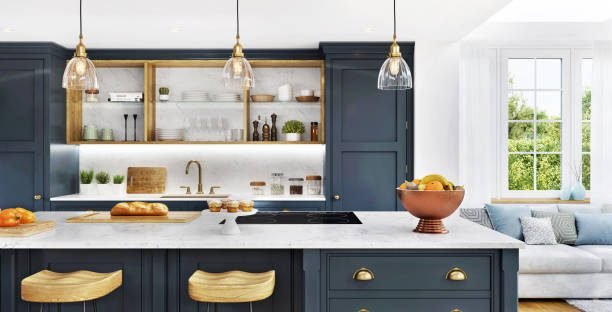
10. Cost Considerations
Industrial kitchen lighting can be selected with the best features for different categories of costs. Here are some tips:
- Budget-Friendly Options: DIY stores and online stores sell different products of industrial lights and other affordable lighting fixtures with quality and aesthetic looks.
- Factors Affecting Cost: Cost is expressed concerning material, brand, and design of Lighting Fixtures. Those which are made of steel or brass usually cost more while glass or wood finishing is less expensive.
11. Sustainable Lighting Choices
Getting to know the long-term consequences of their activity, customers start to look for more environmentally friendly lighting solutions in industrial kitchen design. Here are some eco-friendly options to consider:
- Eco-Friendly Bulbs: LED bulbs use less electricity than other bulb types and have a longer lifespan than most bulbs, including incandescent bulbs. These bulbs lower your usage and your costs and have positive impacts on our planet.
-
Using Reclaimed Materials: A large number of industrial fixtures are made from recycled materials like metal pipes, wood and or glass reused from old products eliminating wastage. Selecting these green options brings personality to your kitchen and at the same time, makes for a sustainable way of designing it.
12. Accent Lighting Ideas
It also should be noted that accent lighting enhances the overall look of your industrial kitchen. Here are a few creative ideas:
- Lighting for Open Shelving: For open shelves, small lights under countertops or freestanding lights like spotlights can be used to accent items while also being fixtures in the room and adding to the decor where they’re needed. They also make important things noticeable say antique dishware or any decorative item put in the room.
- Spotlights on Decor Elements: Lights should be installed in such a way that they focus on items like; paintings, brickwork or bulky furniture. This provides more appeal in terms of aesthetics and gives dimension with a variety of lights to make the space look more interesting.
13. Expert Insights
Getting quotes and advice from professionals can add something new to your design ideas. Here’s what some experts have to say about industrial kitchen lighting:
- “I believe that when it comes to Industrial lighting, different textural like metal and glass should go hand in hand to give the room some order it deserves given that the lighting is both functional and fashionable.” – Sarah Monroe is a professional interior Designer.
- “It will be advisable to use lamps that can be swaying to ensure that different parts of the kitchen are well illuminated both in terms of functionality and appearance. – Robert Greene, Lighting Consultant
14. Real-Life Example
Take the example of a restaurant-inspired kitchen with exposed pipes and concrete walls: Both pendant lights and adjustable track lights look excellent here but can be over so one two or three pendant lights and four adjustable track lights are perfect. Some strategically placed wall-mounted lights help the kitchen shelves to be not only functional but also an art piece.
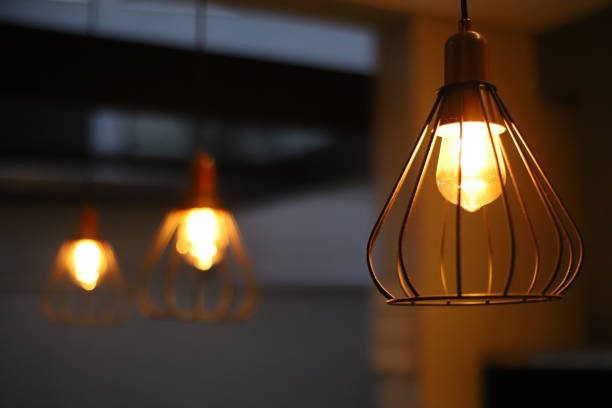
15. Future Trends in Kitchen Lighting
The industrial lighting trends for kitchen settings are changing over time through the incorporation of better and more improved innovations that relate to the use of motorized as well as environmentally friendly lighting. Here’s what the future may hold:
- Smart Lighting Integration: Making use of smart technology is also an interesting way to affect the times when the lighting in the kitchen is applied. Smart bulbs or fixtures allow for the management of the actual intensity, colour, and even the time it is switched on depending on your smartphone or a voice-activated assistant. It facilitates a personal lighting option that is specified depending on various times of the day and particular tasks performed in the kitchen.
- Shift Towards Sustainable Lighting: Overall, with the increasing interest of homeowners towards saving the environment, many businesses are ironing towards producing energy-efficient lighting systems. This year, we will witness even more industrial lighting fixtures that are produced with metals and wood reclaimed from discarded products and more efficient bulbs.
16. Conclusion
Lighting in industrial kitchens is one of the most visually appealing and functional styles to ensure that the kitchen environment looks great and works even better. The fixtures and materials available for kitchen lighting are massively diverse, thus, you can choose the best lighting plan that suits your kitchen design and personality. Industrial lighting has strong outlines and uses raw materials, darkness and light to enhance spaces thus is suitable for any modern or rustic kitchen.
FAQ’s
[saswp_tiny_multiple_faq headline-0=”h3″ question-0=”1. What is industrial kitchen lighting?” answer-0=”Industrial kitchen lighting is a design style focused on raw, rugged aesthetics that often feature metal, glass, and exposed bulbs. It combines functionality with a minimalist yet bold look, commonly seen in urban lofts and modern rustic kitchens. ” image-0=”” headline-1=”h3″ question-1=”2. Which industrial lighting fixtures are best for a kitchen?” answer-1=”Pendant lights, track lighting, recessed lights, and wall-mounted fixtures are popular industrial lighting options for kitchens. Each offers specific benefits, such as focused task lighting or ambient lighting, and works well in different areas of the kitchen. ” image-1=”” headline-2=”h3″ question-2=”3. What are the best bulbs for industrial kitchen lighting?” answer-2=”LED bulbs are ideal for industrial kitchen lighting due to their energy efficiency and longevity. Warm white LEDs offer a cozy ambiance, while cool white LEDs provide brighter task lighting suitable for kitchens. ” image-2=”” headline-3=”h3″ question-3=”4. How can I make my industrial kitchen lighting more sustainable?” answer-3=”Consider using LED bulbs for energy efficiency, and choose fixtures made from reclaimed or recycled materials. Some companies also produce eco-friendly fixtures specifically designed to reduce environmental impact. ” image-3=”” headline-4=”h3″ question-4=”5. What are some future trends in industrial kitchen lighting?” answer-4=”Smart lighting and sustainable materials are leading trends. Smart lighting allows for custom control over brightness and color, while sustainable lighting focuses on eco-friendly materials and energy-efficient bulbs. ” image-4=”” count=”5″ html=”true”]

